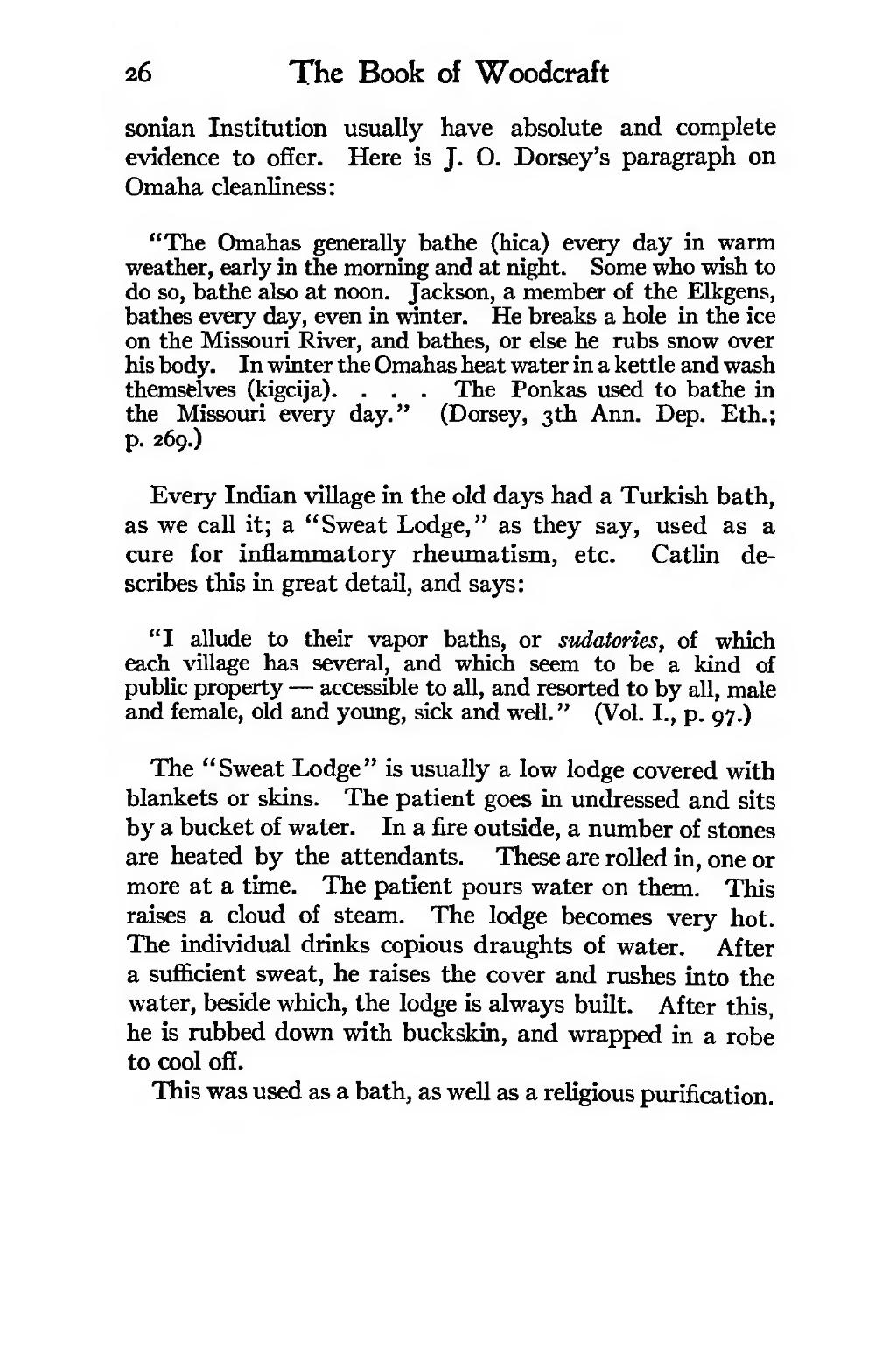26 The Book of Woodcraft soman Institution usually have absolute and complete evidence to ofEer. Here is J. 0. Dorsey's paragraph on Omaha cleanliness: "The Omahas generally bathe (hica) every day in warm weather, early in the morning and at night. Some who wish to do so, bathe also at noon. Jackson, a member of the Elkgens, bathes every day, even in winter. He breaks a hole in the ice on the Missouri River, and bathes, or else he rubs snow over his body. In winter the Omahas heat water in a kettle and wash themselves (kigcija). . . . The Ponkas used to bathe in the Missouri every day." (Dorsey, 3th Ann. Dep. Eth.; p. 269.) Every Indian village in the old days had a Turkish bath, as we call it; a "Sweat Lodge," as they say, used as a cure for inflammatory rheumatism, etc. Cathn de- scribes this in great detail, and says: "I allude to their vapor baths, or sudatories, of which each vUlage has several, and which seem to be a kind of public property — accessible to all, and resorted to by all, male and female, old and young, sick and well. " (Vol. I., p. 97.) The "Sweat Lodge" is usually a low lodge covered with blankets or skins. The patient goes in undressed and sits by a bucket of water. In a fire outside, a number of stones are heated by the attendants. These are rolled in, one or more at a time. The patient pours water on them. This raises a cloud of steam. The lodge becomes very hot. The individual drinks copious draughts of water. After a sufficient sweat, he raises the cover and rushes into the water, beside which, the lodge is always built. After this, he is rubbed down with buckskin, and wrapped in a robe to cool off. This was used as a bath, as well as a religious purification.
Stránka:book 1913.djvu/48
Z thewoodcraft.org
Tato stránka nebyla zkontrolována
